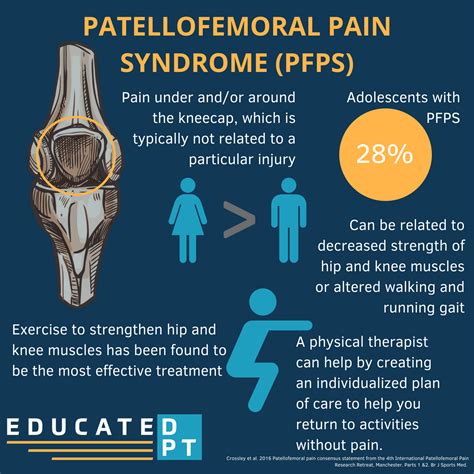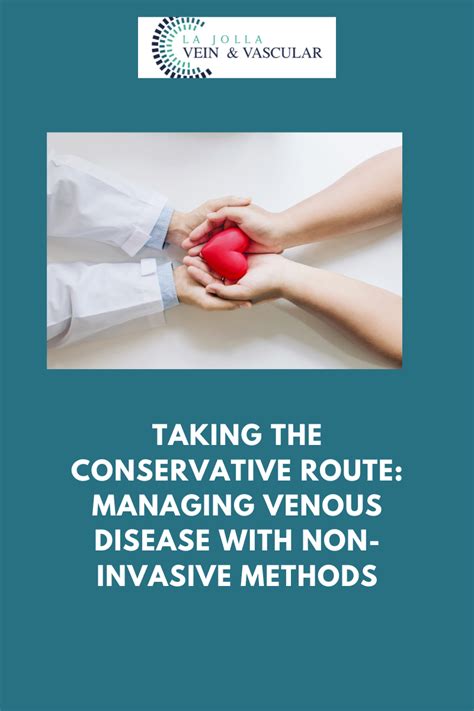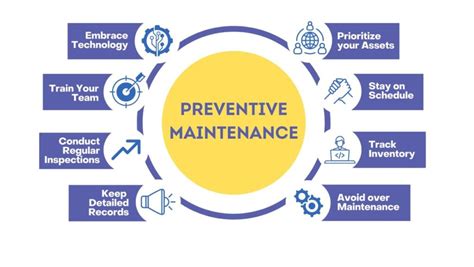Intro
Discover effective Patellofemoral Syndrome treatment options, including physical therapy, knee braces, and pain management, to alleviate anterior knee pain and improve knee function with non-surgical and surgical methods.
Patellofemoral syndrome, also known as runner's knee or chondromalacia patellae, is a common condition that affects the knee joint. It is characterized by a dull, aching pain in the front of the knee, usually around or behind the patella (kneecap). This condition is often caused by overuse, misalignment of the knee, or poor tracking of the patella. The importance of understanding patellofemoral syndrome lies in its prevalence among athletes and individuals who engage in repetitive knee-bending activities. If left untreated, the condition can lead to chronic pain, decreased mobility, and a reduced quality of life.
The significance of addressing patellofemoral syndrome cannot be overstated. It is essential to recognize the symptoms, understand the causes, and explore the various treatment options available. By doing so, individuals can take proactive steps to manage their condition, prevent further complications, and maintain an active lifestyle. Furthermore, a comprehensive approach to treating patellofemoral syndrome involves a combination of conservative management, physical therapy, and, in some cases, surgical intervention. This multifaceted approach allows individuals to regain control over their knee health and pursue their passions without being hindered by chronic pain.
The impact of patellofemoral syndrome on daily life can be substantial. Simple activities like walking, climbing stairs, or engaging in sports can become daunting tasks due to the associated pain and discomfort. Moreover, the psychological toll of living with chronic pain should not be underestimated. It can lead to frustration, anxiety, and depression, further emphasizing the need for effective treatment and management strategies. By exploring the various treatment options and adopting a proactive approach to knee health, individuals can mitigate the effects of patellofemoral syndrome and improve their overall well-being.
Understanding Patellofemoral Syndrome

Causes and Risk Factors
The causes of patellofemoral syndrome are multifactorial and can be attributed to various factors, including: * Overuse or repetitive knee-bending activities * Poor tracking of the patella * Weak quadriceps muscles * Tight or inflexible hip and leg muscles * Misalignment of the knee or leg * Previous knee injuries or trauma * Genetic predispositionConservative Management

Physical Therapy
Physical therapy plays a crucial role in the conservative management of patellofemoral syndrome. A physical therapist can help individuals develop a personalized exercise program to improve strength, flexibility, and range of motion. Some of the key physical therapy interventions include: * Quadriceps strengthening exercises * Hip and leg stretching exercises * Patellar mobilization and tracking exercises * Core strengthening exercises to improve overall stability and balanceSurgical Intervention

Post-Surgical Rehabilitation
Post-surgical rehabilitation is essential to ensure a successful outcome after surgical intervention. This involves a combination of physical therapy, pain management, and lifestyle modifications to promote healing and recovery. Some of the key components of post-surgical rehabilitation include: * Pain management and medication * Ice and compression to reduce pain and inflammation * Range of motion and strengthening exercises * Progressive weight-bearing and mobility exercises * Return to activity and sport-specific trainingAlternative Therapies

Nutritional and Lifestyle Modifications
Nutritional and lifestyle modifications can play a crucial role in managing patellofemoral syndrome. Some of the key modifications include: * Maintaining a healthy weight to reduce stress on the knee joint * Eating a balanced diet rich in omega-3 fatty acids, vitamin D, and calcium * Staying hydrated to promote cartilage health and joint lubrication * Avoiding aggravating activities and taking regular breaks to rest and stretchPrevention and Maintenance

Return to Activity and Sport
Return to activity and sport is a crucial aspect of managing patellofemoral syndrome. This involves a gradual and progressive approach to reintroduce activities and sports, taking into account the individual's strength, flexibility, and pain levels. Some of the key considerations include: * Gradually increasing intensity and duration of activities * Incorporating strengthening and stretching exercises to maintain strength and flexibility * Avoiding aggravating activities and taking regular breaks to rest and stretch * Using proper equipment and technique to reduce stress on the knee jointWhat are the common causes of patellofemoral syndrome?
+Patellofemoral syndrome is often caused by overuse, misalignment of the knee, or poor tracking of the patella. Other factors, such as weak quadriceps muscles, tight or inflexible hip and leg muscles, and previous knee injuries or trauma, can also contribute to the development of the condition.
What are the symptoms of patellofemoral syndrome?
+The symptoms of patellofemoral syndrome include a dull, aching pain in the front of the knee, usually around or behind the patella. The pain may be worse when climbing stairs, squatting, or engaging in activities that involve repetitive knee-bending.
What are the treatment options for patellofemoral syndrome?
+The treatment options for patellofemoral syndrome include conservative management, physical therapy, and surgical intervention. Conservative management involves lifestyle modifications, pain management strategies, and physical therapy to improve strength, flexibility, and range of motion. Surgical intervention may be necessary in some cases to repair or replace damaged cartilage or to realign the patellar tendon.
In conclusion, patellofemoral syndrome is a complex condition that requires a comprehensive approach to treatment and management. By understanding the causes, symptoms, and treatment options, individuals can take proactive steps to manage their condition and improve their overall quality of life. We invite you to share your experiences and ask questions about patellofemoral syndrome in the comments section below. Additionally, if you found this article informative and helpful, please share it with your friends and family who may be struggling with knee pain or discomfort. Together, we can work towards promoting knee health and wellness, and reducing the impact of patellofemoral syndrome on daily life.
